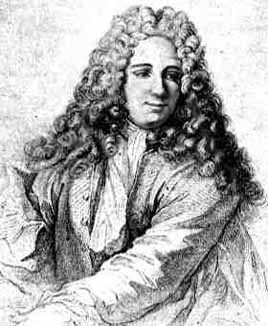Topics in Applied Math: Methods
of Optimization
Math 5750-002/ 6880-002 , 3 credit hours. Fall 2011.
MWF 11:50-12:40, WEB 1450
Instructor :
Professor Andrej
Cherkaev,
Department of Mathematics
Office: JWB 225,
Email: cherk@math.utah.edu,
Tel : 801 - 581 6822
Text: Jorge Nocedal and
Stephen J. Wright. Numerical Optimization (2nd
ed.) Springer, 2006
Chapters 1, 2, 3, 4, 5, 6, 7, 9, 10, 12,13, 15, 16,
17.
Notes
Course is designed for
senior undergraduate and graduate students in Math, Science,
Engineering, and Mining
Prerequisite: Calculus, Linear
Algebra, Familiarity with elementary programming.
Grade will be based on weekly
homework, exams, and class presentations. M 6880 students will
be assigned an additional project.
Notes and Homework
Text for Introduction topic: SINGLE VARIABLE SEARCH TECHNIQUES
http://www.mpri.lsu.edu/textbook/Chapter5-b.htm
http://en.wikipedia.org/wiki/Golden_section_search
http://en.wikipedia.org/wiki/Fibonacci_search_technique
Homework 1
Homework 2
Additional reading for Trust region method:
Notes 1 ,
Notes 2 ,
See also Matlab Optimization Toolbox and Mathematika tools ,
Homework 3
Homework 4
Two revevant research papers
J. E. Dennis, Jr. and Jorge J. Morέe. Quasi-Newton Methods, Motivation and Theory.
R. Chartrand, and V. Staneva. A quasi-Newton method for total variation
regularization of images corrupted by non-Gaussian noise.
Homework 5
Final exam FINAL
Good luck, everyone!
Optimization
The desire for optimality (perfection) is inherent for
humans.
The search for extremes inspires mountaineers, scientists,
mathematicians,
and the rest of the human race.

Search for Perfection:
An image from
Bridgeman Art
Library
A beautiful and practical optimization
theory was developed from the sixties when computers become
available. Every new generation
of computers allowed for attacking new types of problems and called for
new
optimization methods. The aims are reliable methods to fast approach
the extremum of a function of several variables by an intelligent
arrangement of its evaluations
(measurements). This theory is vitally important for modern engineering
and planning that incorporate optimization at every step of the
complicated
decision making process.
This course discusses various direct methods,
such as Gradient Method, Conjugate Gradients, Modified Newton
Method, methods
for constrained optimization, including Linear and Quadratic
Programming,
and others. We will also briefly review
genetic algorithms that
mimic evolution and stochastic algorithms that account for
uncertainties
of mathematical models. The course work includes several homework
assignments
that ask to implement the studied methods and a final project, that
will be orally presented in the class.
Contents
Plan
Remarks, Introduction: About
the algorithms, Optimization and modeling, Basic
rules, Classification
Links
Go to the top
Introduction. Ch 1, 2
Line search methods Ch.3
Trust region methods Ch. 4
Conjugate gradient method Ch. 5
Quasi-Newton methods. Ch. 6
Large-scale problems and calculation of derivatives. Ch. 7, 8
Derivative-free optimization. Noise. Ch 9
Least-square problems. Ch 10
Constrained Optimization. Ch 12
Linear Programming. Ch. 13
Nonlinear Constrained Optinization. Ch 15
Quadratic programming. Ch 16
Penalty and Augmented Lagrangina Method. Ch 17
Projects presentation
Review of various methods (2 week)
Stochastic search. Genetic algorithms. Discrete methods. Minimax and
games.
Reserve (1 week).
Go to the top
Remarks on Optimization
The desire for optimality (perfection) is inherent for humans. The
search for extremes inspires mountaineers, scientists, mathematicians,
and the rest of the human race. A beautiful and practical mathematical
theory of optimization (i.e. search-for-optimum strategies) is developed
since the sixties when computers become available. Every new generation
of computers allows for attacking new types of problems and calls for new
methods. The goal of the theory is the creation of reliable methods to
catch the extremum of a function by an intelligent arrangement of its evaluations
(measurements). This theory is vitally important for modern engineering
and planning that incorporate optimization at every step of the complicated
decision making process.
 |
Optimization and aestetics
The inherent human desire to optimize is cerebrated in the famous Dante
quotation:
All that is superfluous displeases God and
Nature
All that displeases God and Nature is evil.
In engineering, optimal projects are considered beautiful and rational,
and the far-from-optimal ones are called ugly and meaningless. Obviously,
every engineer tries to create the best project and he/she relies on optimization
methods to achieve the goal. |
 |
Optimization and Nature
The general principle by Maupertuis
proclaims:
If there occur some changes in nature, the
amount of action necessary for this change must be as small as possible. 
This principle proclaims that the nature always finds the
"best" way to reach a goal. It leads to an interesting inverse optimization
problem: Find the essence of optimality of a natural "project." |
The essence of an optimization problem is: Catching
a black cat in a dark room in minimal time.
(A constrained optimization
problem corresponds to a room full of furniture.)
A light, even dim, is needed: Hence optimization methods explore assumptions
about the character of response of the goal function to varying parameters
and suggest the best way to change them. The variety of a priori assumptions
corresponds
to the variety of optimization methods. This variety explains why there
is no silver bullet in optimization theory. |
|
Semantics
Optimization theory is developed by ingenious and creative people,
who regularly appeal to vivid common sense associations, formulating them
in a general mathematical form. For instance, the theory steers numerical
searches through
canyons
and passes (saddles), towards the
peaks;
it fights the curse of dimensionality,
models
evolution,
gambling,
and other human passions. The optimizing algorithms themselves are mathematical
models of intellectual and intuitive decision making.
Go to the top
Introduction to Optimization
Everyone who studied calculus knows that an extremum of a smooth function
is reached at a stationary point where its gradient vanishes. Some may
also remember the Weierstrass theorem which proclaims that the minimum
and the maximum of a function in a closed finite domain do exist. Does
this mean that the problem is solved?
A small thing remains: To actually find that maximum. This problem is
the subject of the optimization theory that deals with algorithms
for search of the extremum. More precisely, we are looking for an algorithm
to approach a proximity of this maximum and we are allowed to evaluate
the function (to measure it) in a finite number of points. Below, some
links to mathematical societies and group in optimization are placed that
testify how popular the optimization theory is today: Many hundreds of
groups are intensively working on it.
Go to the top
Optimization and Modeling
The modeling of the optimizing process is
conducted along with the optimization. Inaccuracy of the model is emphasized
in optimization problem, since optimization usually brings the control
parameters to the edge, where a model may fail to accurately describe the
prototype. For example, when a linearized model is optimized, the optimum
often corresponds to infinite value of the linearized control. (Click
here to see an example) On the other hand, the roughness of the model
should not be viewed as a negative factor, since the simplicity of a model
is as important as the accuracy. Recall the joke about the most accurate
geographical map: It is done in the 1:1 scale.
Unlike the models of a physical phenomena, an optimization models critically
depend on designer's will. Firstly, different aspects of the process
are emphasized or neglected depending on the optimization goal. Secondly,
it is not easy to set the goal and the specific constrains for optimization.
Naturally, one wants to produce more goods, with lowest cost
and highest quality. To optimize the production, one either may constrain
by some level the cost and the quality and maximize the quantity, or constrain
the quantity and quality and minimize the cost, or constrain the quantity
and the cost and maximize the quality. There is no way to avoid the difficult
choice of the values of constraints. The mathematical tricks go not
farther than: "Better be healthy and wealthy than poor and ill". True,
still not too exciting.
The maximization of the monetary profit solves the problem to some extent
by applying an universal criterion. Still, the short-term and long-term
profits require very different strategies; and it is necessary to assign
the level of insurance, to account for possible market variations, etc.
These variables must be a priori assigned by the researcher.
Sometimes, a solution of an optimization problem shows unexpected features:
for example, an optimal trajectory zigzags infinitely often. Such behavior
points to an unexpected, but optimal behavior of the solution. It should
not be rejected as a mathematical extravaganza, but thought through! (Click
here for some discussion.)
Go to the top
Basic rules for optimization algorithms
There is no smart algorithm for choosing the oldest
person from an alphabetical telephone directory.
This says that some properties of the maximized function be a priori assumed.
Without assumptions, no rational algorithms can be suggested. The search
methods approximate -- directly or indirectly -- the behavior of the function
in the neighborhood of measurements. The approximation is based on the
assumed smoothness or sometimes the
convexity
Various methods assume different types of the approximation.
My maximum is higher than your maximum!
Generally, there are no ways to predict the behavior of the function everywhere
in the permitted domain. An optimized function may have more than one local
maximum. Most of the methods pilot the search to a local maximum without
a guarantee that this maximum is also a global one. Those methods that
guarantee the global character of the maximum, require additional assumptions
as the convexity.
Several classical optimization problems serve as testing grounds for optimization
algorithms. Those are: maximum of an one-dimensional
unimodal function, the mean square approximation, linear
and
quadratic
programming.
Go to the top
Classification
To explain how knotty the optimization problems are, one may try to classify
them. I recommend to look at the optimization
tree by NEOS.
Below, there are some comments and examples
of optimization problems.
-
Numerous optimization methods are designed for various number
of independent controls (dimensionality). These ranges corresponds
to one variable, several (two to ten), dozens, hundreds, or tens of thousands.
-
An important special class -- discrete optimization
-- corresponds to a large number of controls that take only integer or
Boolean values. It requires combinatorial methods.
-
Another special case --
calculus
of variations -- corresponds to infinitely many controls.
-
A significant parameter is the cost of evaluation
of the function: It ranges from milliseconds of the computer time to lengthy
and costly measurements in natural experiments. Accordingly, the realistic
goals and the methods are different.

Sharp Maximum is achieved!
The photo by and courtesy of
Dr. Robert (Bob) Palais |
The sharpness of the maximum is
of a special interest. It is very difficult to find a maximum of a flat
function especially in the presence of numerical errors. For instance,
a point of the maximum elevation in a flat region is much harder
to determine than to locate a peak in the mountains. A sharp maximum
(left figure) also requires some special methods since the gradient
is discontinuous; it does not exist in the optimal point. |
-
The presence of constraints and their character is very important for the
choice of the strategy. The constrained problem
typically possess the sharp maximum in a corner of the permitted domain
while the smooth unconstrained function reaches its maximum in a stationary
point.
-
Stochastic optimization deals
with noise in measurements or uncertainty of some factors in the model.
The optimization process should account for possibly non accurate data
(click
here to see an example). Here, the goal may be to maximize the expected
gain or to maximize the probability of the high profit.
-
Another approach asks to play the game: Design versus Uncertainty, considering
for the worst possible scenario. Find here an
example of such game.
Structural
Optimization is an interesting and tricky class of optimization problem.
It is characterized by a large number of variables that represent the shape
of the design and and stiffness of the available materials.
The control is the layout of the materials in the volume of the structure. |
 |
In any practical problem, the researcher meets a unique combination of
mentioned factors and has to decide what numerical tools to use or modify
to reach the goal. Therefore, the optimization always includes creativity
and intuition. It is said that optimization belongs to both science and
art.
Go to the top
Go to Contents
Go to the top
Go to
Teaching Page
Go to my Homepage
NSF support is acknowledged.





